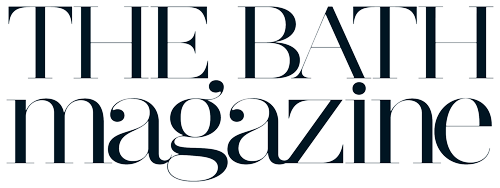Before his recent retirement, Victoria Art Gallery Manager Jon Benington chose an artwork from the gallery’s permanent collection. With children’s presents on our mind, a sculpture of plasticine inventor William Harbutt felt an appropriate selection.
In the portrait sculpture shown below, William Harbutt is depicted very much as a thinker and inventor, not unlike Rodin’s famous statue of The Thinker. Dressed for the outdoors, his hand stroking his beard, he gazes into the distance as if contemplating a knotty problem.
The sculpture’s integral bronze plinth makes the sitter’s identity and eminence abundantly clear, for the bust was modelled by his favourite pupil in plasticine, the material that he invented. In years to come plasticine was the go-to modelling material for children, available in a range of bright colours and often found wrapped in festive paper as a present beneath the family Christmas tree. Few of the recipients knew, however, that plasticine was not only invented in Bath but also, until the 1980s, exclusively manufactured in Bathampton. For generations to come the Harbutt family kept the material’s formula a closely guarded secret.
William was born in North Shields, Northumberland, the son of Thomas Harbutt (c.1803-1880) and Elizabeth Whitehouse Jefcoate (1804-1883). Thomas worked as a bookkeeper in 1841, a spirit merchant in 1851 and latterly became an iron galvanizer (his effects were valued at under £800 for probate). At the age of about 17, William moved to Jersey in the Channel Islands where he worked for his brother-in-law, William Barkas, as a bookseller’s assistant.
Between 1869 and 1874 Harbutt studied at the National Art Training School (part of the Royal College of Art) and qualified to teach elementary and architectural drawing. From 1874 to 1877 he was head of the School of Art in Bath but left after a dispute, following which he swiftly opened The Paragon Art Studio at 15 Bladud Buildings, Bath with his wife Elizabeth (Bessie). She was a well-known miniature portrait artist who exhibited works at the Royal Academy and the Chicago World’s Fair. In 1887 Bessie was commissioned by Queen Victoria to produce portraits of herself and her late husband Prince Albert. William and Bessie married in 1876. Number 15 Bladud Buildings was at the opposite end of the Paragon to the Municipal School of Art, which occupied premises at number 33 between 1864 and 1896.
Harbutt invented Plasticine around 1897 as a non-drying modelling clay for use by his students. At the time he was living in Hartley House, Alfred Street, Bath. Later he moved to The Grange on the High Street in Bathampton. The original modelling material was grey, but after commercial production commenced, four colours were produced for initial sale to the public. The mixture comprised 65 per cent bulking agent (principally gypsum), ten per cent petroleum jelly, ten per cent lanolin and ten per cent stearic acid. Unlike clay it could not be hardened by firing, melted when exposed to heat, and became flammable at higher temperatures.
After being awarded a trademark in 1899, Harbutt established a manufactory in 1900 based in an old mill on the banks of the Kennet & Avon Canal in Bathampton. William travelled far and wide in order to promote the product, while also disseminating his theories about the teaching of art by allowing children free expression.
He and Bessie had seven children, six of whom survived infancy and worked in the family business. The Harbutt company, owned and run by Harbutt’s descendants, continued to manufacture Plasticine in Bathampton until 1983, rebuilding the factory after it was accidentally burnt down by a contractor in 1963.
William died of pneumonia while on a trip to New York City in 1921. His remains were returned to Britain so that he could be buried in the graveyard of St Nicholas Church, Bathampton. At his death his wealth came to a substantial £15,113 15s. 2d.
Tours of the permanent collection in the art store at Victoria Art Gallery take place on certain Thursdays. The next tour is on 15 December, from 12–12.45pm; victoriagal.org.uk


